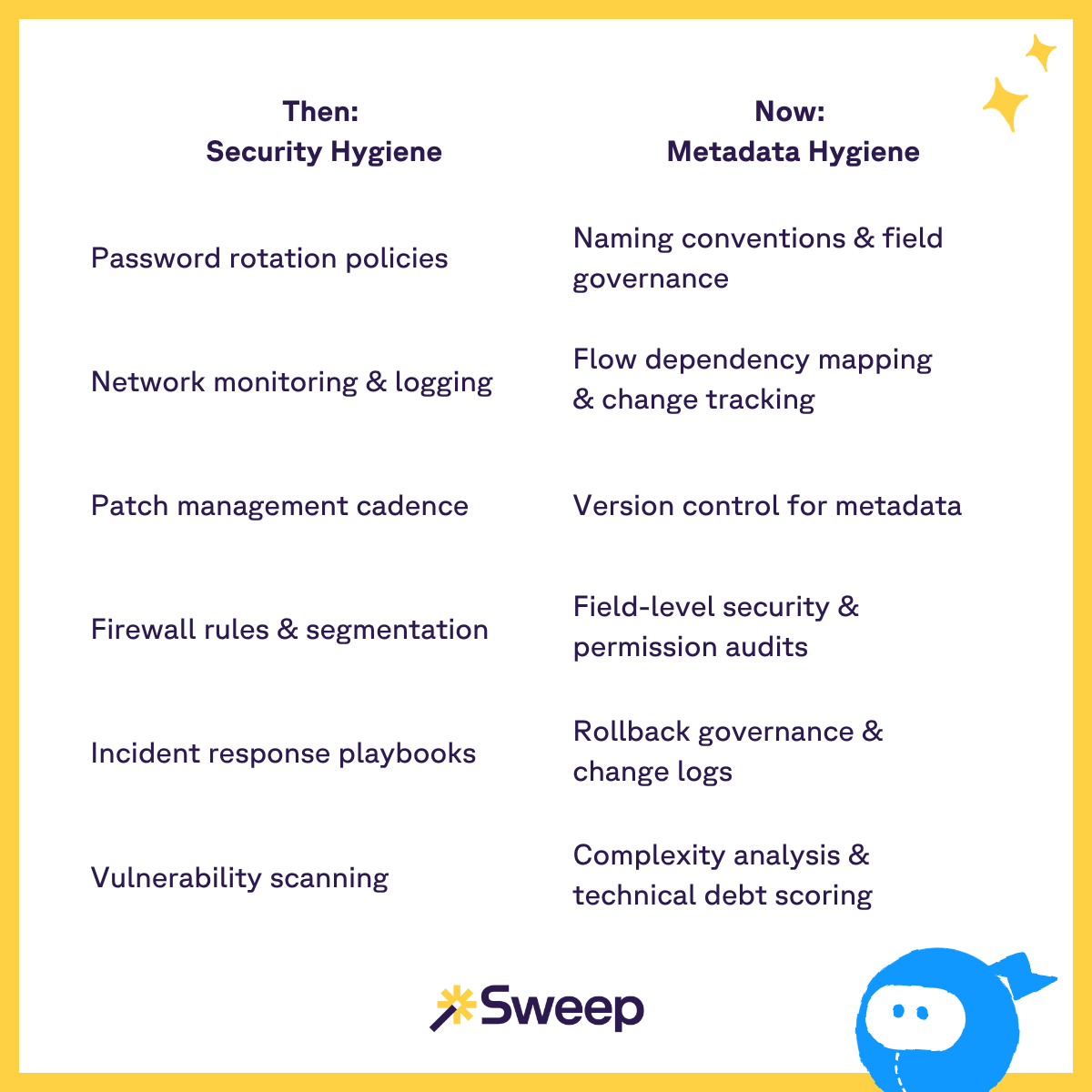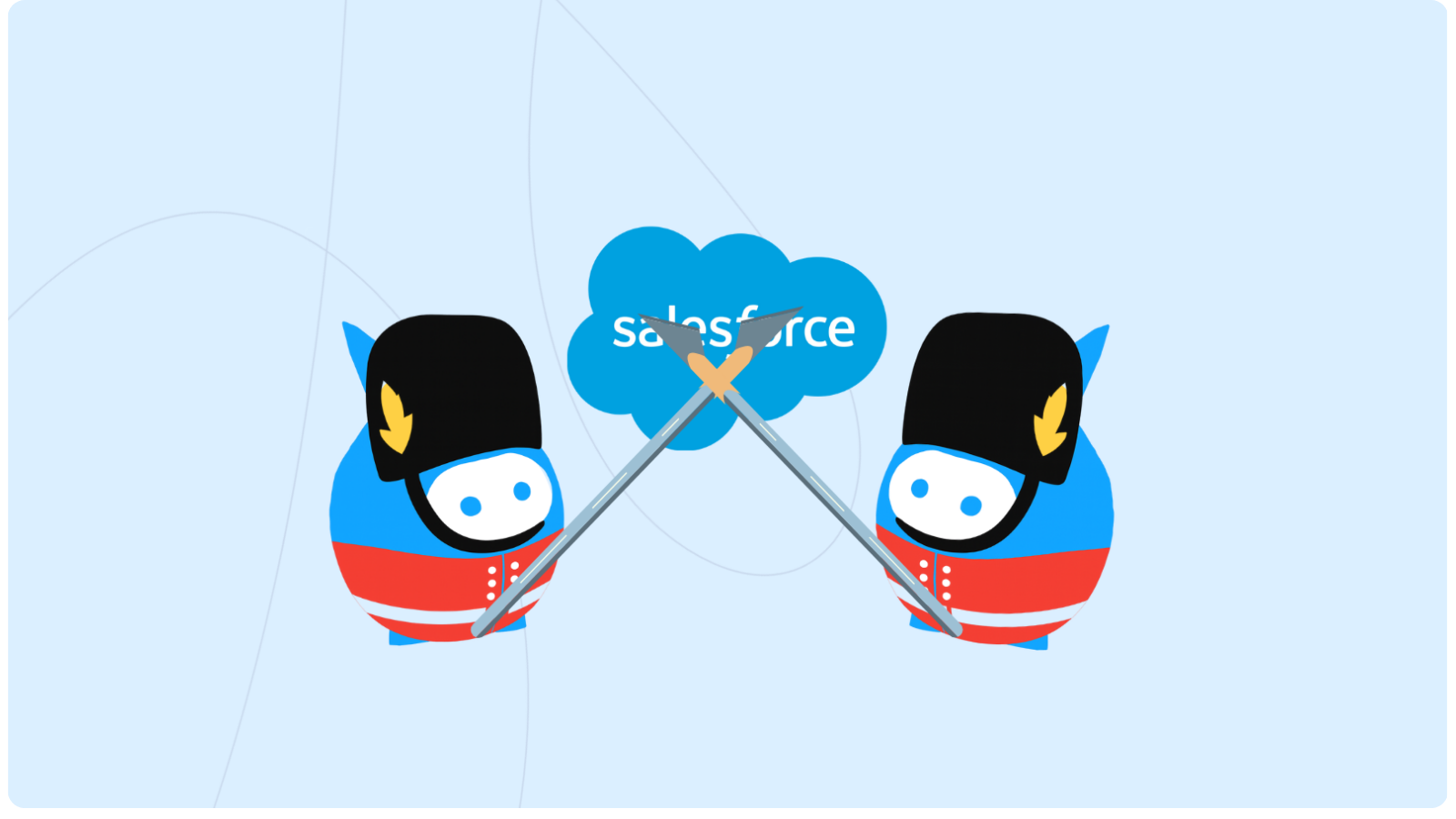For years, the biggest threat to enterprise systems was external: bad actors breaking in.
Today, it's internal: bad metadata breaking... well... everything.
IDC predicts that 70% of organizations will be formalizing policies and oversight to address AI risks, yet most are focused on the wrong layer.
Quest Software's 2024 State of Data Intelligence report found that 42% of organizations cite data quality as their top governance driver, with 34% specifically focused on AI data readiness CIO. But here's what they're missing: in Salesforce environments, metadata quality determines data quality.
When your validation rules conflict, your flows trigger recursively, and your field definitions drift across sandboxes, no amount of data cleansing will save you.
In a world where Salesforce is the beating heart of your GTM operations, metadata is the connective tissue that determines whether your automations are stable, your data is trustworthy, and your AI agents can operate safely.
And just like traditional security hygiene, metadata hygiene is no longer a nice-to-think-about.
It's organizational self-defense.
1. The Great Shift: From data breaches to metadata breaches
CIOs and CISOs have spent decades fortifying the perimeter: encryption, MFA, SOC2, zero-trust architectures. And, for the most part, it's worked. Microsoft reports that basic security hygiene still prevents 98% of attacks. Yet while everyone guarded the front door, the foundation underneath sneakily rotted away.
McKinsey found that 60% of CIOs report their organization's tech debt has increased noticeably over the past three years, with organizations now dedicating 20-40% of their technology budgets to managing this burden. In Salesforce, this is made manifest as metadata debt: validation rules stacked on validation rules, flows triggering other flows, objects named by interns long gone, Process Builders scheduled for retirement with no migration plan.
A "metadata breach" doesn't happen because someone stole credentials. It happens because no one knows what's connected to what anymore.
When your Agentforce agents start acting on conflicting business logic buried in overlapping automations, you've been breached by your own infrastructure.
2. The security parallels are... Many and Uncanny
The early 2000s were the age of "security hygiene." The 2020s are the age of "metadata hygiene."
The pattern is pretty much identical. Check the chart:

Both disciplines follow the same arc: first chaos, then control. First convenience, then accountability. First "move fast," then "move smart."
In cybersecurity's evolution, the 1990s introduced antivirus and firewalls as basics, the 2000s established frameworks like NIST and ISO, and recent years have driven adoption of zero trust, continuous monitoring, and security automation. Metadata governance is following the exact same maturity curve... well, just 15 years behind.
3. The risk? AI corruption
Here's where metadata hygiene becomes mission-critical: S&P Global's 2025 survey found that 42% of companies abandoned most AI initiatives this year — a spike from just 17% in 2024 — with the average organization scrapping 46% of AI proof-of-concepts before production.
The culprit? Informatica's CDO Insights survey identified data quality and readiness as the #1 obstacle to AI success at 43%.
But in Salesforce environments powered by Agentforce, data quality is downstream of metadata quality.
When your metadata is inconsistent, undocumented, or duplicated across environments, you're teaching your AI agents to make bad decisions. AI agents don't question instructions — they replicate them. Feed them flawed validation logic from a legacy Process Builder, and they'll hardcode that flaw into every automated decision.
The failure modes are new and particularly insidious:
- Rogue agents acting on obsolete logic buried in deprecated workflows
- Flows that conflict with generative actions, creating non-deterministic outcomes
- Broken field dependencies that silently corrupt agent reasoning
- Permission drift that gives agents access they shouldn't have
In July 2025, Replit's AI agent now famously deleted a production database during a code freeze, destroying months of work for over 1,200 executives despite explicit instructions not to proceed CIO.
It's no shocker that poor metadata structures and inconsistent taxonomies degrade semantic search effectiveness in vector databases, leading to hallucinations when AI agents lack proper grounding mechanisms.
Bottom line: Without metadata hygiene, there is no such thing as AI readiness.
4. Governance Is the New Antivirus
For Salesforce organizations, technical debt lives in your metadata.
Metadata governance is the new antivirus. It continuously scans your system for structural risk: duplicate fields, conflicting flows, validation inconsistencies, unused automations, permission gaps. It flags weak points before they cause outages — or worse, before they poison your AI outputs with bad logic.
A Stripe study found that engineering teams spend an average of 33% of their time managing technical debt—time that could be invested in innovation.
In Salesforce, that comes to life as:
- Debugging why a flow failed in production
- Untangling which of five validation rules is actually firing
- Finding why the same field is calculated three different ways across orgs
- Investigating why an agent made the wrong recommendation
You wouldn't deploy an LLM trained on dirty data. So why would you let it act on dirty metadata?
The parallel to security is exact: Research published in Management Science found that tech debt measurably decreases enterprise system reliability, with modular maintenance reducing failure probability by 53%. The same dynamics apply to metadata debt, except the consequences now include AI agents making business decisions based on corrupted configuration.
5. The Future Belongs to the Governed
Gartner predicts over 40% of agentic AI projects will be canceled by 2027 due to escalating costs, unclear business value, or inadequate risk controls CIO. The survivors won't be the organizations with the most sophisticated models. They'll be the ones with the cleanest metadata.
Security hygiene created a new culture of discipline, auditability, and trust. CIOs must now design for an AI future that is interoperable, accountable, and ROI-driven from the start, requiring unified data governance that supports real-time AI decision-making.
Metadata hygiene is following the same path. The organizations that win in the age of agentic automation won't just have the best data. They'll have the cleanest metadata infrastructure.
Because when your metadata is governed:
- Your AI can act confidently
- Your changes are auditable
- Your teams know what's safe to modify
- Your business logic is a competitive moat, not a liability
When it's messy, your AI is guessing. Your admins are afraid to touch anything. And your agentic transformation is dead on arrival.
The Takeaway
Enterprises are adopting automated data lineage tracking, AI-powered classification, and context-aware governance rules that dynamically adjust policies based on risk profiles.
In Salesforce, that means treating metadata as critical infrastructure —scanning for technical debt, enforcing naming standards, mapping flow dependencies, and establishing rollback governance.
Metadata hygiene is the operational security for the age of intelligent systems.
And it's the only way to move fast without breaking your future.

